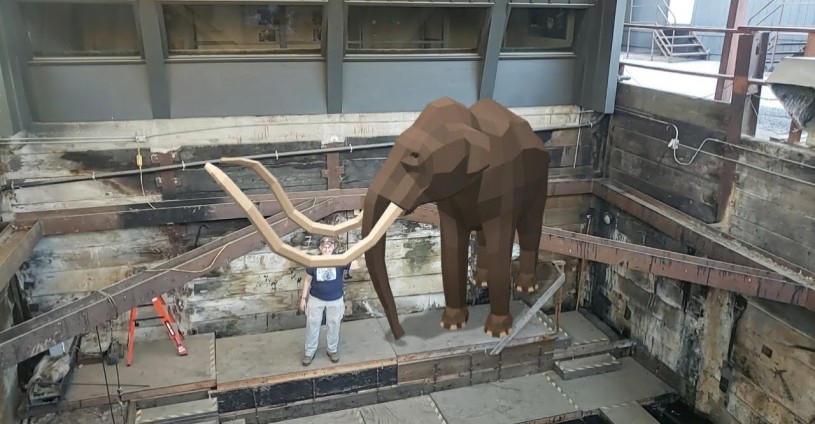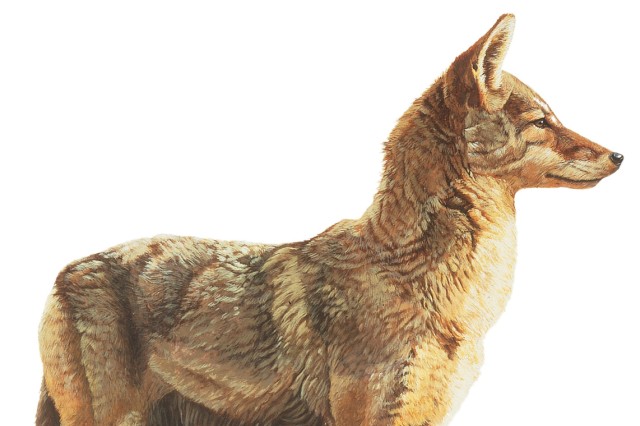
story
Discover the differences between Columbian mammoths and American mastodons
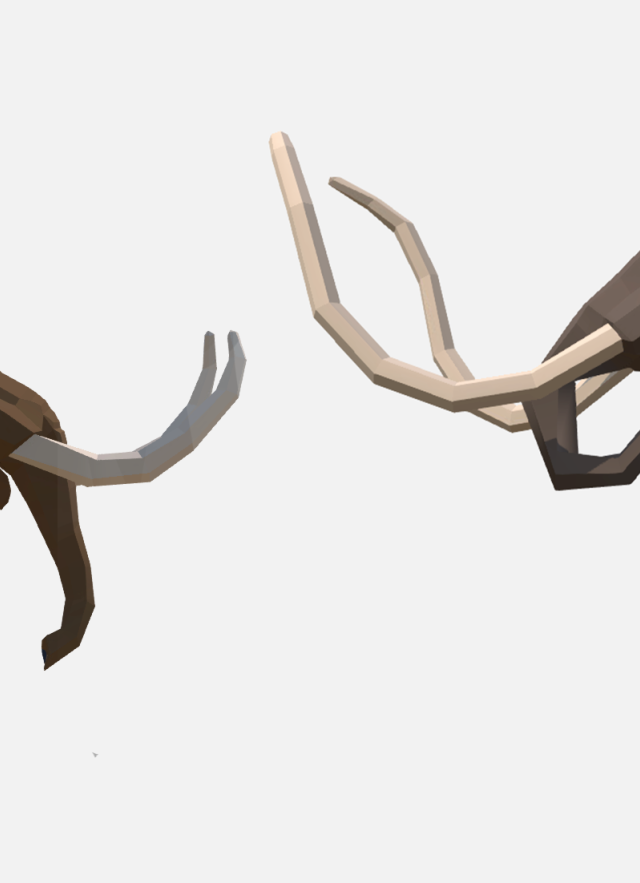
Published May 1, 2024
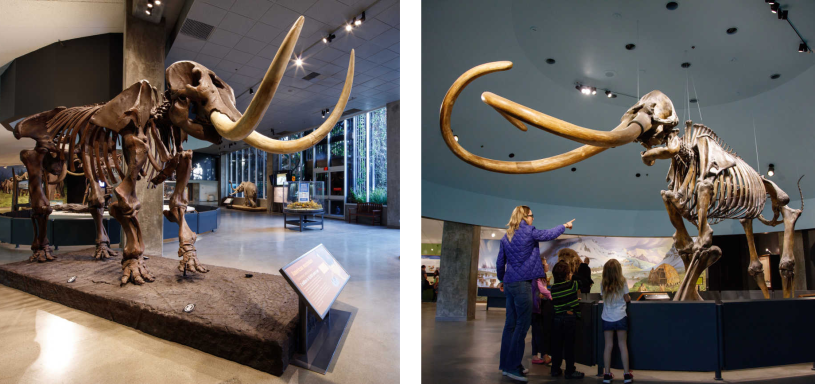
Both mammoths and mastodons belong to the order Proboscidea—the group of mammals that includes elephants. The name comes from proboscis, referencing their iconic trunks. It’s a group with over 180 members described in the fossil record and some surprising trunk and tusk shapes.
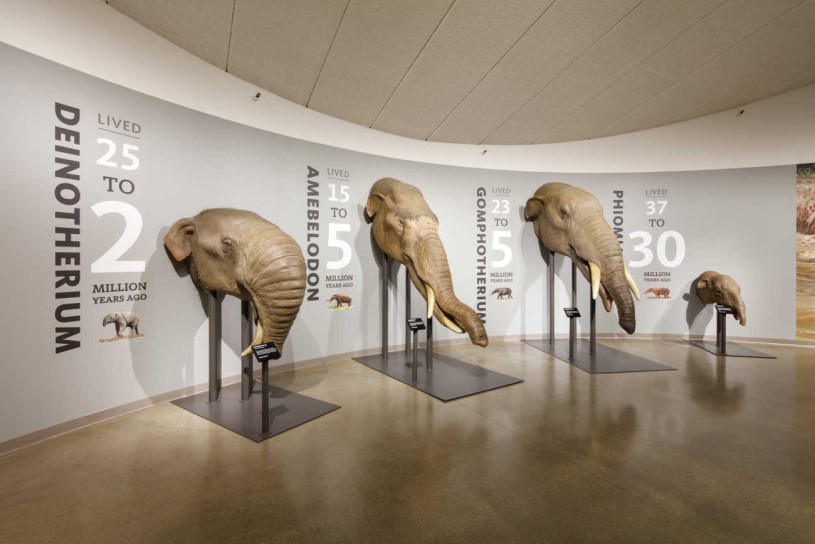
Mammoths are more closely related to modern elephants (separated by merely 5 million years of evolution) while mastodons are much more distantly related (separated by about 25 million years!). Ancestors of both groups originally arose in Africa, making their way into Eurasia, eventually reaching Siberia and crossing the Bering Land Bridge into North America. Ancestors of the mastodons found at the Tar Pits arrived in North America between 11 and 16 million years ago, while ancestors of the mammoths found here came around 1.5 million years ago.
Mammoths belong to the genus Mamuthus and mastodons belong to the genus Mammut. Only one species of each has been found at the Tar Pits: Mammut americanum, the American mastodon (or possibly Mammut pacificus—more on that later), and Mammuthus columbi, the Columbian mammoth. When you read ‘mammoth’, you might be picturing something covered in a thick coat, like the woolly mammoth (Mammuthus primigenius) but while these hairy, cold-adapted giants roamed North America, they never made it far enough south to get stuck at La Brea. The Columbian mammoths uncovered at the Tar Pits were bigger and much less hairy. They were adapted to warmer climates than their northern cousins, and have been found as far south as Mexico.
Low poly American mastodon (Mammut americanum) by Natural History Museum of Los Angeles County on Sketchfab
The low-poly 3D models above are scientifically accurate paleoart reconstructions of Ice Age animals found at La Brea Tar Pits. Even with just digital skin, we can already see some noticeable differences. Mastodons had flatter heads, and mammoths had a bulging bone knob on top of their skulls. The Columbian mammoth was also much larger than its distant cousin—fully-grown males weighed nearly 10 tons and stood about 13 feet tall—while male American mastodons reached heights of 10 feet and weighed in around 6 tons. To see the feature that most clearly distinguishes the two behemoths you’d have to get a closer look inside their mouths.
Like modern elephants, mammoths had ridged cheek teeth to help grind down grasses into tiny digestible bits. They were grazers like the bison and horses stampeding across the Pleistocene Los Angeles.
Mastodons followed a different dietary path, and it shows in their teeth. The distinct shape even led early researchers like Scottish anatomist William Hunter to speculate that they belonged to a carnivore. They are pointier than you might think for an herbivore. Their teeth were composed of parallel sets of conical structures, a design optimized for crunching twigs and leaves of shrubs and trees. Mastodon actually means “breast tooth”, a reference to the paired cones that make up their peculiar teeth.
Interestingly, the American mastodons found at La Brea might not even be American mastodons. A recent study has proposed that the mastodons found at the Tar Pits and throughout California represent a different species, dubbed Mammut pacificus: the Pacific mastodon. The researchers cite anatomical differences like a sixth sacral vertebra (compared to the five in American mastodons), thicker femurs, and narrower teeth than the American mastodons found elsewhere in North America. The Pacific mastodon also lacks mandibular tusks—small tusks that jut out of male American mastodon’s chins. Paleontologists haven’t reached a consensus on the new species, but it’s a great example of how the fossil record is always revealing new plot twists in the story of life at La Brea Tar Pits.
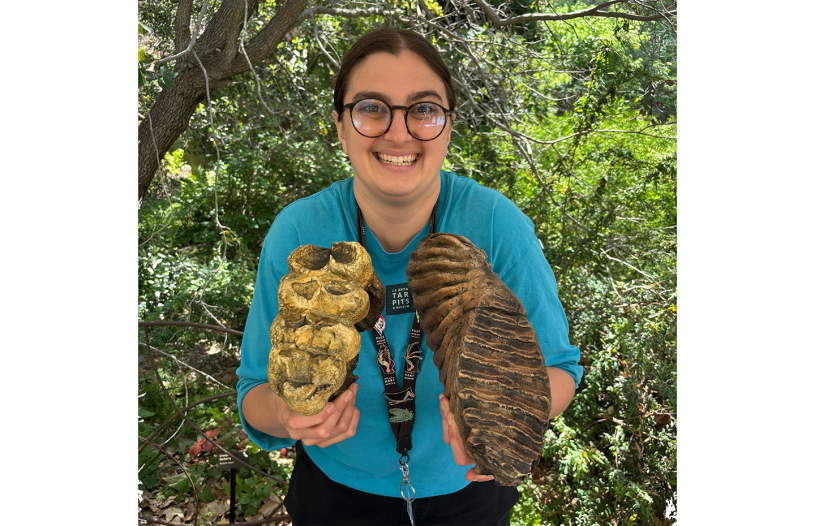
Long filled in but still actively seeping in Hancock Park, Pit 9 can boast of preserving the most proboscidean specimens at La Brea—by far! Excavations of this deposit over one hundred years ago produced the vast majority of the Tar Pits’ mammoth and mastodon remains, including more than 400 mammoth bones and about 200 mastodon bones. Based on the number of different types of bones preserved, scientists have estimated that Pit 9 captured at least 27 mammoths alone!
More recently, Tar Pits researchers found the largest and most complete individual Columbian mammoth found at La Brea. Nicknamed Zed, the specimen was unearthed in 2006 and had tusks 3.16 m (10.4 ft) long (measured along their outer curve). Preparators are still working on his massive skull which can be viewed in the museum's Fossil Lab, and his tusks are on display along the east wall of the museum.
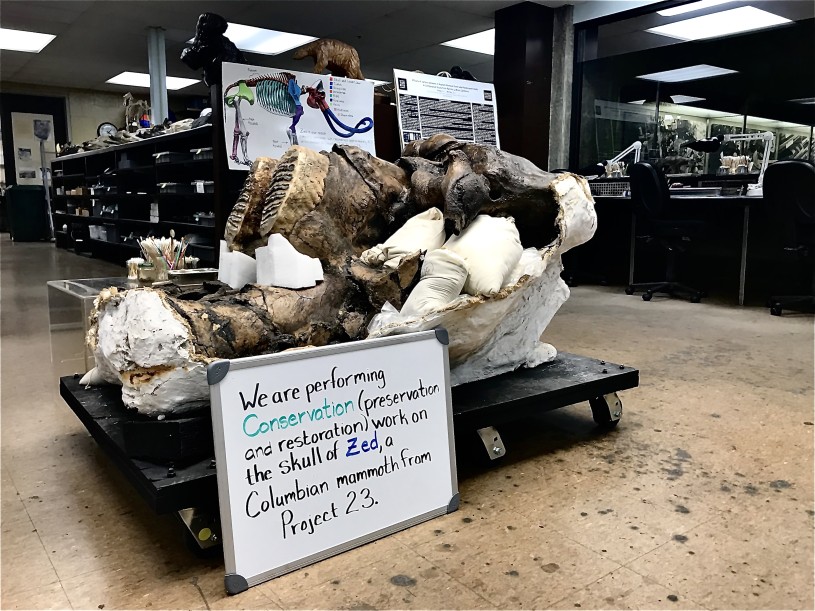
Until June, you can further explore the 55 million-year history of proboscideans’ astounding diversity in the proboscidean evolution room at La Brea Tar Pits. There, you can take a deep dive into everything elephantine—from their evolutionary history to touchable trunks. After it closes, you’ll still be able to find skeletons, casts, and life recreations of these titans—from not-so-giant pygmy mammoths to majestic American (or Pacific!) mastodons—throughout the museum.
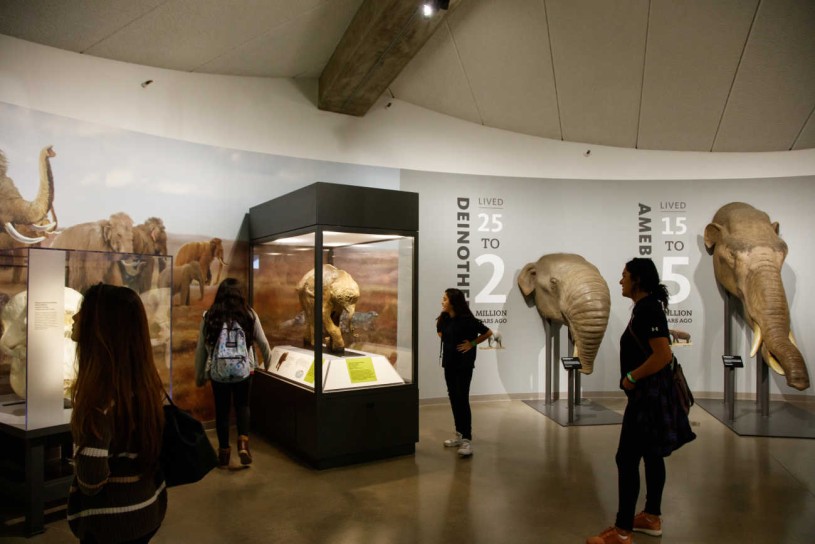
You can keep digital mammoths and mastodons wherever you go with Tar AR. Scan the QR codes below and you bring your low-poly pachyderm back to the Tar PIts—or your second favorite spot to get stuck at in L.A..
Open your phone camera and scan each code to experience these animals in AR.

Columbian mammoth | 
American mastodon
|
